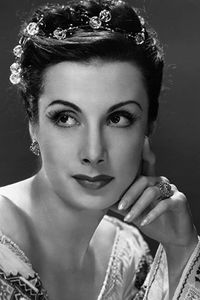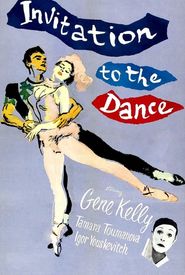Tamara Toumanova, a celebrated Russian-American prima ballerina and actress of unparalleled distinction, was born on March 2, 1919, in the City of Light, Paris, France, to Russian parents who had been forced to flee their homeland. As a precocious and gifted young artist, Toumanova made her stage debut at the remarkably tender age of 10 with the children's ballet of the prestigious Paris Opera, thereby showcasing her extraordinary talent and innate aptitude for the art form at a remarkably young age.
Toumanova's career witnessed an extraordinary surge in success as she emerged as one of the most renowned and celebrated Baby Ballerinas of the esteemed Ballet Russe de Monte Carlo, whose discovery was facilitated by her fellow émigré and ballet master of unparalleled expertise, George Balanchine. Throughout Europe, she took to the stage in numerous ballets, thereby firmly establishing herself as a world-class dancer of unparalleled talent and skill. Furthermore, Balanchine's productions at Ballet Theatre in New York City afforded her the opportunity to showcase her exceptional artistry, thereby propelling her to stardom in the United States, cementing her status as a legendary dancer.
Toumanova's artistic endeavors were predominantly centered around ballet, yet she also ventured into the realm of cinematic storytelling, making notable appearances as a ballet dancer in a string of films, commencing in the year 1944.
Born with a passion for the art of dance, she naturally gravitated towards the world of ballet, where she honed her skills and became a master of her craft.
However, Toumanova's creative pursuits extended beyond the confines of the ballet stage, as she also made a name for herself in the film industry, showcasing her remarkable talent as a ballet dancer in a variety of motion pictures.
In addition to her impressive career in the world of dance and film, Toumanova also held a strong connection to the United States, as she became a naturalized citizen of the country in the year 1943, in the city of Los Angeles, California.
Toumanova's illustrious Hollywood tenure spanned nearly three decades, from 1944 to 1970, during which she made a lasting impression on the big screen by consistently embodying the captivating persona of a dancer in a total of six films.
Her feature film debut, a dramatic masterpiece titled Days of Glory, marked the beginning of her cinematic journey in 1944. In this powerful and poignant portrayal, Toumanova brought to life the character of a Russian dancer, whose fate was inextricably linked with that of Soviet partisan leader Gregory Peck, as they navigated the treacherous landscape of war-torn Europe, with the Russian dancer being rescued from the clutches of the invading German forces by Peck's courageous and selfless actions.
Notable among Toumanova's cinematic achievements is her captivating portrayal of the renowned Russian prima ballerina, Anna Pavlova, in the 1953 musical extravaganza Tonight We Sing. This notable performance showcased her remarkable acting abilities and dedication to her craft.
Furthermore, Toumanova's impressive resume includes her striking appearance as the enigmatic French dancer, Gaby Deslys, in the 1954 biographical musical masterpiece Deep in My Heart. Her exceptional dancing skills and captivating stage presence undoubtedly left a lasting impression on audiences.
Additionally, Toumanova shared a memorable and iconic dance scene with the legendary Gene Kelly in the 1956 dance film Invitation to the Dance. This memorable collaboration between two of the most talented performers of their time has become an enduring classic, cherished by film enthusiasts to this day.
Toumanova's impressive acting repertoire extended far beyond the realm of film, as she also made notable appearances in the cinematic landscape. One such notable endeavor was her starring role as the lead ballerina in the 1966 political thriller Torn Curtain, masterfully directed by the legendary Alfred Hitchcock. This iconic film showcased Toumanova's remarkable talent, as she brought her captivating presence to the screen.
Furthermore, Toumanova's impressive range was once again demonstrated in her portrayal of Russian ballerina "Madame Petrova" in the 1970 mystery film The Private Life of Sherlock Holmes. Directed by the renowned Billy Wilder, this cinematic masterpiece allowed Toumanova to showcase her exceptional acting abilities, as she brought depth and nuance to her character.
Toumanova's remarkable career was marked by a wide range of memorable performances, and her appearances in Torn Curtain and The Private Life of Sherlock Holmes serve as a testament to her enduring talent and dedication to her craft.
Toumanova's personal life was characterized by a profound and lasting impact, marked by the significant union she entered into with Casey Robinson, a pivotal encounter that occurred during the early stages of her cinematic career, specifically while working on her inaugural film, Days of Glory.
Tamara Toumanova, a renowned Russian-born ballerina, departed this life on May 29, 1996, at the ripe age of 77, in the picturesque coastal city of Santa Monica, California, due to unspecified medical causes.
Before her passing, she made the thoughtful decision to donate her cherished Preobrajenska costumes to the esteemed Vaganova Choreographic Museum in St Petersburg, Russia, a testament to her enduring legacy and commitment to the world of dance.
Upon her demise, Tamara Toumanova was laid to rest in eternal slumber beside her beloved mother, Eugenia, in the historic Hollywood cemetery, surrounded by the iconic landmarks and cultural attractions that had played a significant role in her life and career.
Noted British choreographer John Gregory penned a poignant tribute to the late legendary Russian ballerina, Galina Toumanova, in her obituary, eloquently capturing her essence as a "remarkable artist" whose enduring charisma was underpinned by an unwavering commitment to her craft, a "great personality" whose extraordinary talent and captivating stage presence left an indelible mark on the world of Russian ballet, rendering it inconceivable to envision the art form without her.























